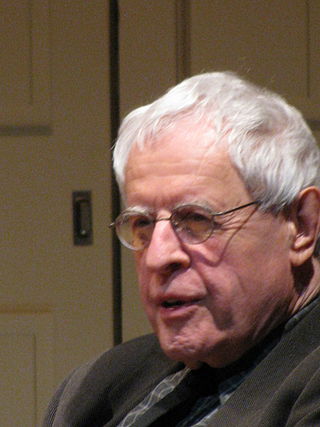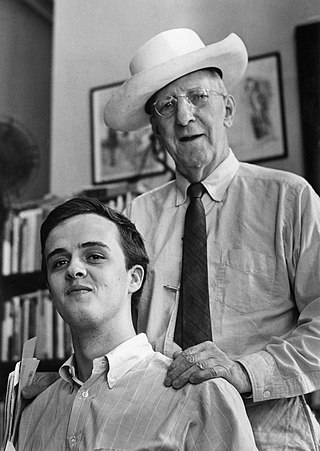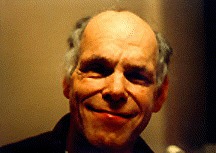Life
Byron A. Vazakas was the son of Alfred Vazakas, a Greek-born linguist who emigrated sometime before 1900 and established a language school in Herald Square, and Margaret Keffer, a young woman who grew up in Reading, Pennsylvania, [1] is the daughter of a former Pennsylvania state legislator, Rep. Aaron T. C. Keffer, a descendant of Henry Clay. There were two younger Vazakas children, Alexander (1906) and Donald (1912). Byron had strong memories of New York City during the years he called his happy “Edwardian childhood.” Both Byron and Alexander (Alex) attended a progressive Montessori School. Tragedy struck during Christmas week 1912 when Alfred Vazakas died suddenly of pneumonia and the family was left destitute.
Alfred Vazakas’ brother Alexander, a professor at the University of Chicago, moved the family to an apartment in Chicago, but within a few weeks, another disaster occurred. A fire destroyed the building and all their possessions. Margaret Vazakas then brought her family to Lancaster, Pennsylvania, to be near members of her family. Donald went to live with relatives while Margaret Vazakas earned a living clerking in local department stores. Byron and Alex attended St. Mary’s Parochial School. Although he served as an altar boy, Byron rebelled against the school’s strict discipline and dropped out after the eighth grade. He never returned to a formal school. From an early age, however, Byron read avidly and showed an interest in writing.
In 1922 Byron and his family moved to Reading, Pennsylvania, to live with his widowed grandmother. Byron continued to live with his mother at various locations near City Park until her death in December 1940. At first, Byron worked in a clothing store and later collected rents for the Reading Company. After he left that job, out of boredom and frustration, his family never pressured him to seek employment, even during the Great Depression.
From this time on, Vazakas concentrated on “the 3 R’s” that dominated his life—“reading, 'riting, and roaming.” He read widely and became well acquainted with classical music. A close friendship developed with William Baziotes, another young Reading man of Greek parentage who later achieved fame as an abstract expressionist painter. Vazakas introduced Baziotes to Baudelaire and the Symbolists; Baziotes cultivated Vazakas’ tastes in art. The friendship endured for 15 years until the two drifted into different worlds. In later years, Vazakas credited Baziotes with being a formative influence on his artistic development. [2] [3]
Vazakas established himself as a writer in Reading, but only a small number of people knew that he wrote poetry. These were the members of the Galleon Writers’ Guild, a group that produced 6 issues of a local literary magazine called "The Galleon: A Journal of Literary Achievement." Vazakas’ first published poem, a 5-line piece entitled “Grief,” appeared in the first issue in November 1934, and five other poems, including one published anonymously and two under the pseudonym "Mernos," and one short story appeared in other issues. In 1935 two other poems were published in a small literary magazine called "The Bard." By this time Vazakas had written 1,500 poems. All but 22 of them were destroyed at his request when Vazakas said that he had found his true poetic voice. When discussing his career in later years, Vazakas never mentioned either "The Galleon" or "The Bard" or the large body of early work.
From 1936 to 1942, Vazakas’ prose writing appeared in the "Reading Times" and the "Historical Review of Berks County." Although he never publicly claimed authorship, evidence is clear from a newspaper report that Vazakas wrote a 16-page pamphlet, "The Reading Public Museum and Art Gallery, Reading, Pennsylvania: Its History and Purpose," ca. 1941. Statements in its text also establish Vazakas as the author of a more ambitious work, "The History of Reading Hospital," published in 1942. As with his early poetry, Vazakas later omitted any reference to these extensively researched pieces of writing. More satisfying was the acceptance of individual poems he submitted to periodicals such as "American Poetry Journal."
During these years Vazakas also reached out to seek the acquaintance of poets he admired. He wrote to, and received replies from, fellow Reading native Wallace Stevens, Marianne Moore, and William Carlos Williams. [4] Williams became enthusiastic about a stanzaic technique in Vazakas’ poetry that he considered innovative. He helped Vazakas find a publisher for his first book, [5] and wrote the introduction for the volume, which appeared in 1946. All 50 of the pieces had previously been published in 15 periodicals, including "New Mexico Quarterly Review" and "Poetry." In 1947 Vazakas was nominated for a Pulitzer Prize for the book. When the award went to Robert Lowell, Vazakas said, “He deserved it. But I did, too.”
In December 1945, a high point for Vazakas while awaiting publication of "Transfigured Night" was a joint reading with Tennessee Williams in the YMHA Poetry Center in New York. The following year Vazakas moved to Cambridge, Massachusetts, where he lived for the next 16 years, although always maintaining close ties with Reading. He enjoyed an association with the literary group centered on Archibald MacLeish that included John Ciardi and Richard Wilbur. Vazakas continued writing poetry and having it published in an increasing number of periodicals including Poetry, [6] Poetry Magazine, [7] Crossing Section, [8] Western Review, [9] and some anthologies. He gave occasional lectures and readings at Harvard University and one at Brown University. On four occasions he received fellowships to summer colonies at Breadloaf, VT; Yaddo, NY; and McDowell, NH. His second volume, The Equal Tribunals, was published in 1962. The following year, on the recommendation of Archibald MacLeish, he won an Amy Lowell Traveling Scholarship for 1962-63, renewed for 1963-64, and went to England. He visited Paris and Majorca, but chiefly spent his time in southern England.
Vazakas returned to spend the rest of his life quietly in Reading, PA. He lived frugally in the house provided by his brother Alex. His days were spent roaming the derelict parts of Reading and writing poetry at a table in the Reading Public Library. He saw the publication of two more volumes, The Marble Manifesto ( 1966) and Nostalgias For A House Of Cards (1970). Five additional typescript volumes, each containing 50 poems, as did his four published books, remained ready for a publisher that Vazakas never succeeded in finding. For many years he tried unsuccessfully to earn grants and fellowships and suffered frustration at the lack of recognition. He was, however, honored in Reading as its unofficial poet laureate. He gave numerous well-received readings, some as part of the Poetry in the Schools program given in high schools in Berks and surrounding counties. He was the subject of some local newspaper features. In May 1981 Albright College awarded him an honorary degree as Doctor of Humanities.
Vazakas died in Reading Hospital on September 30, 1987, after a brief illness, a few days after his 82nd birthday. He is buried in Gethsemane Cemetery, Laureldale, PA. The tombstone, placed by Byron’s devoted brother Alex, reads “Night Transfigured.”
Byron's two brothers, Alex and Donald passed away in 1996 and 2000. Donald's son, Tom currently resides in San Diego with his two children Ben and Saul Vazakas.
Vazakas’ papers were organized by his literary executor, Professor Manfred Zitzman, of Albright College. They were willed to Albright College, where they are held in the Special Collections, Gingrich Library. Besides the five volumes of poetry and other uncollected poetry, the papers yielded 22 plays, three novels, some short stories and articles, and numerous sketches. Vazakas also left packets of all the versions of many poems, the first one on the bottom and the final revision on the top. Following the death of Alex Vazakas, additional materials were discovered in a storage unit in the Highlands, Reading, PA, where Alex last resided.
Description of Vazakas' Poetry
Byron Vazakas described his poetry as “organic poetry” that derives from “the association between the artist’s life and his work,” so that poetry serves as “an extension of the personality.” He reinforced this statement by maintaining that “Unhappily, the connection between my life and my work will probably not be recognized except posthumously.”
Shaping influences
Vazakas’ childhood introduction to literature came from his father, reading aloud the poetry of Byron and the works of Poe. Vazakas’ formal education ended with the eighth grade. After that, he was free to read whatever he liked. He absorbed T. S. Eliot and the Imagists, but his inclinations led him to the Symbolist poetry of Stéphane Mallarmé, Paul Verlaine, Arthur Rimbaud, and Paul Valéry. He was deeply affected by Charles Baudelaire and Rainer Maria Rilke. Along with reading, he listened to classical music and studied art, guided to a great extent by his Reading friend, William Baziotes, who later gained fame as an abstract expressionist.
By 1935, Vazakas had written 1,500 poems imitating every style and rhyme scheme he had encountered. He regarded these as practice poems and asked his friend, Galleon editor Lloyd Arthur Eshbach, to destroy them, as he did, when Vazakas said he had found his true poetic voice. Only 22 early poems survive. Thus Byron Vazakas was able to emerge as a mature poet in his first volume, Transfigured Night.
The literary friends that Vazakas cultivated gave him encouragement and support. Foremost of these was William Carlos Williams, who discovered Vazakas’ poetry at a crucial time in his career. He credited Vazakas with inventing a new stanzaic technique that he called “the toy cannon” and lavished him with praise. In the Introduction to Transfigured Night, he called him “that important phenomenon among writers, an inventor” because of his approach to the poetic line. Williams characterized Vazakas as “gentle-vitriolic, kind-inhuman, forgiving-obdurate, a poet whose urbanity is inviolate.” He observed that “Vazakas doesn’t select his material. . . . It is. Like the newspaper that takes things as it finds them,--mutilated and deformed, but drops what it finds as it was, unchanged in all its deformity and mutilation. . . .”
Marianne Moore responded warmly to Vazakas’ overtures and encouraged him from the start. In contrast, Wallace Stevens, despite the connection to Reading, his birthplace, was only coolly cordial, though later he was reported to have described Vazakas as a “clever fellow.” At various times Vazakas enjoyed an association with other writers: Tennessee Williams, John Ciardi, James Merrill, Archibald MacLeish, Richard Wilbur, Theodore Roethke, W. H. Auden, and Edwin Honig. He developed a friendship with the young novelist Maritta Wolff that lasted almost all his life.
Vazakas’ subject matter
The writers whom Vazakas admired convinced him to value his everyday experiences. These included the rich vein of material he mined from his “Edwardian childhood” in New York City and his boyhood in Lancaster, PA. He was a “walking poet” in the manner of Walt Whitman, and whatever he saw and reflected upon was grist for his poetic mill, whether it was in the Berks County countryside, the streets of Boston or London, or Paris, or the run-down sections of Reading or Philadelphia.
The persona Vazakas presented in his first published piece, the 5-line poem “Grief” in The Galleon, became an enduring one.
- "I am known
- To winds that moan
- In grey clouds;
- In crowds
- I am alone"
From the start, Vazakas identified himself with the image of an outsider, a young man painfully and ironically aware of a romantic isolation as he argues with the world. He wanders alone in rural or urban settings feeling variously fearful or angry, lonely or trapped. Then comes a surge of spirit and a fierce will to survive. He escapes in a number of ways: the pleasure of reliving the past, the love of a friend and the security of home, and the joy of music, art, and nature. A vacillation between the pessimistic and the optimistic approach creates an emotional counterpart in the poetry.
Vazakas’ own painful feelings as an outsider led him to empathize with others who experienced feelings of isolation or alienation. His subjects include writers and painters (Federico García Lorca, Hart Crane, Walt Whitman); people who stepped outside the moral code (Oscar Wilde); political radicals (Rosa Luxemburg); people forced into violent situations against their will; and, eventually, the dregs of society. Vazakas observed people of the “nether world” only from a distance, but he lauded the rare individuals who serve down-and-out people without trying to reform them.
Vazakas was proud to be characterized as a poet who demonstrated a “moral fervor” in his approach to life. He was a humanist who emphasized the importance of free will in the search for truth and goodness. To him, morality was “the ethical treatment of others.” He abhorred the deliberate loss of life, whether from the death penalty or from military initiatives that forced young men to be candidates for an early death or to “kill without anger.” He approved of suicide if that was the only honorable course of action that enabled an individual to take control of his life.
The mode of the poetry
In 1944 Vazakas described his poetry as “a kind of cadenced prose with the poetry in the content . . . rather than in the practice.” He abhorred the strictures imposed by rhyme, meter, and traditional “forms” like the sonnet. Instead, he emphasized the value of “the words themselves” in conveying “an attitude or aspect personally experienced and felt.” Three decades later Vazakas revised that first description. He said, “It may sound like merely cadenced poetry, but most is pure iambic.” He explained that the iambic mode might be obscured by the lack of rhyme and the use of enjambment.
Vazakas called his poetry “lyric, but essentially dramatic,” whether the format is a one- or two-page poem employing the short stanza that William Carlos Williams called “the toy cannon” or a paragraph-length prose poem or a poem with longer, looser lines. The drama is evident, he said, in the frequent occurrence of “scenes, settings, and characters.” Vazakas enhances the dramatic presentation by writing customarily in the present tense, thus inviting the reader into the state of mind the poem presents. He employs past tense in descriptions of action extending over a while or in reminiscences about his childhood.
Other characteristics
The power of description is one of the immediately appealing features of the poetry. The early poems are full of condensed, fused images, a legacy from T. S. Eliot and the Imagists. The later poems rely less heavily on succinct clusters of images, but the quality of the images is consistently high.
Allusions to music and art abound in the poetry, in reflection of Vazakas’ devotion to the arts. Everywhere he went, he said, he took with him the remembered sounds of music, and, apparently, the remembered images of art. Not surprisingly for a writer who called himself an expressionist, he preferred the romantics in music and the impressionists in art.
Understatement occurs frequently. This element establishes an air of studied, ironic nonchalance. The irony is often gentle, except when the subject matter concerns injustice or inhumanity. Then it becomes open and accusatory.
Unadorned conversational statements help to create the “casualness” Vazakas said he aimed to achieve. The poet often seems just to be talking, making ordinary comments. Playing against this idiom, however, are flashes of wit, sometimes in the form of colloquial wording or slang at unexpected moments. Vazakas’ titles often add an extra dimension apart from the effect of the lines.
The language is customarily succinct. The word choice is sometimes “erudite, recondite, scholarly”; at other times “down to earth.” Vazakas said he was “constantly torn between the two” kinds of words. The more ordinary choices become dominant in the later poetry.
Summary
Vazakas characterized his poetry by placing himself “midway between the pure literary, intellectual, cerebral and a man like Sandburg, particularly.” In contrast to Wallace Stevens, Vazakas called his own poetry “psychologic, graphic.” In a poem of his, he said, “Joe, the hatter,” would be an actual person, not a symbolic presence, and the subject of the poem would be “the suffering or hardships of Joe.” In Joe and all his counterparts, down to society’s seamiest outcasts, Vazakas expressed “the personal experience of everyman, in an appropriate form. In that respect,” he said, his poems “have something to say.”
(Sources are identified in the work of Patricia H. Hummel listed in the bibliography.)












